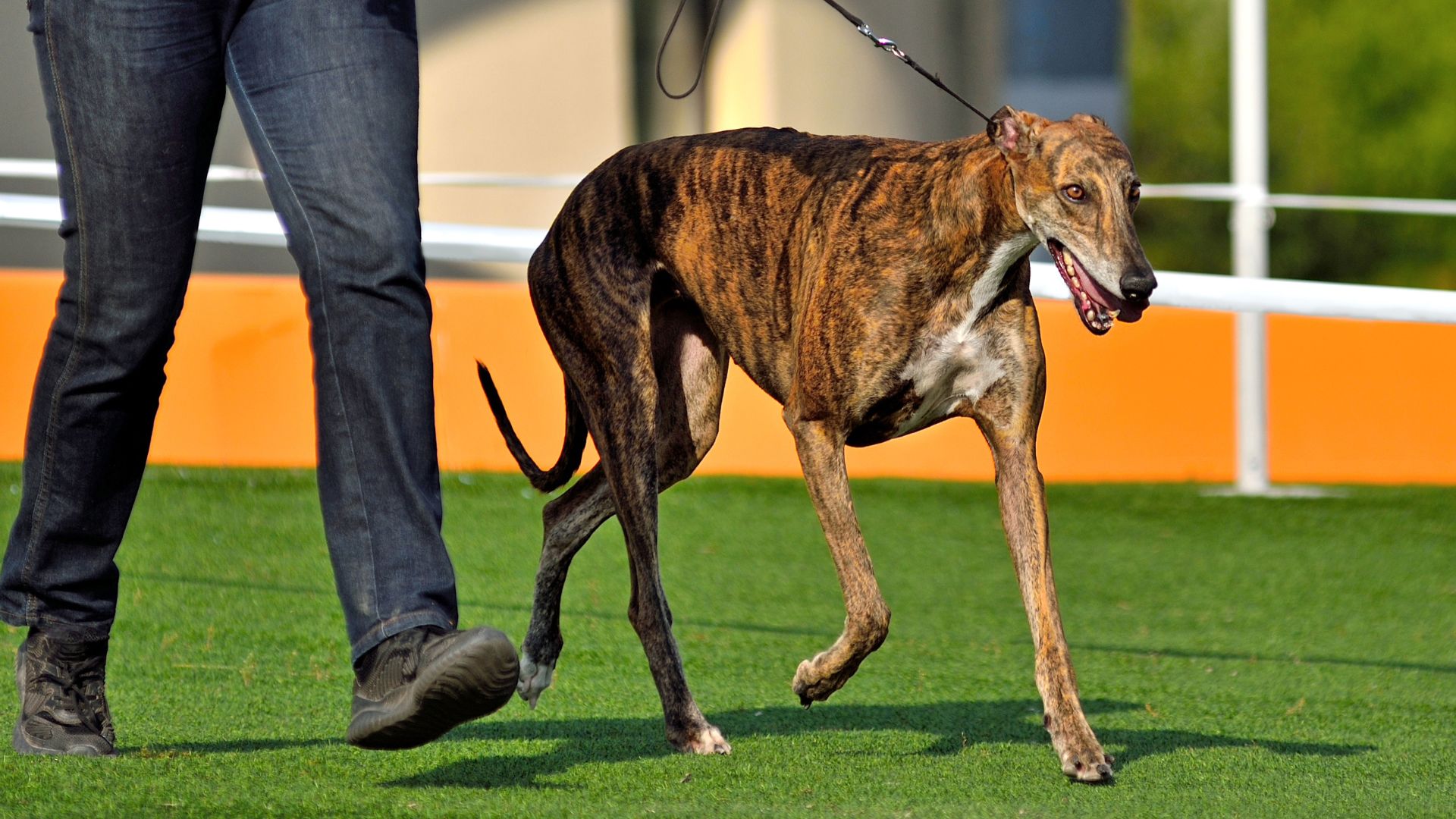Dog intelligence is often measured by obedience, but anyone who has owned a hound knows that standard doesn’t tell the whole story.
Hounds can be stubborn, and at first glance, some people mistake that independence for a lack of smarts. In reality, it’s the opposite. Their refusal to blindly obey comes from self-reliance, reasoning, and centuries of selective breeding for independent work.
They think for themselves, often solving problems in ways owners never expect. This quality makes them brilliant hunters and loyal canines who read situations with uncanny accuracy. The challenge is understanding their intelligence rather than underestimating it.
The following article introduces the smartest hound dog breeds of all time, showcasing the unique ways they prove their brilliance.
Smartest Hound Dog Breeds Of All Time
1. Bloodhound
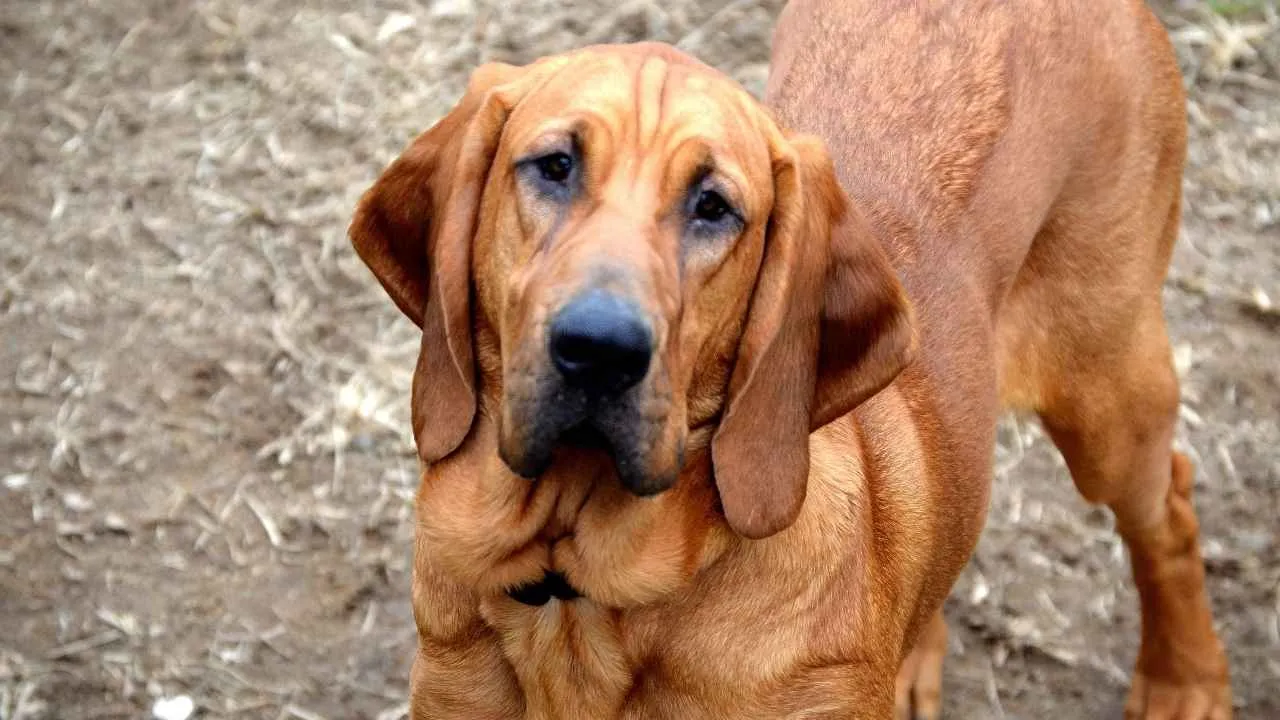
The Bloodhound’s intelligence was refined over centuries in medieval Europe. They were originally developed for endurance and scent precision over vast distances. This history instilled them with unmatched sensory problem-solving skills, placing them in a category of their own.
Scent Recognition Abilities
Bloodhounds can identify and follow scents for days across miles of rough terrain. Their olfactory system contains nearly 230 million scent receptors, giving them one of the sharpest noses in the canine world, as noted by PBS Nature. This unique capacity defines a specialized form of dog intelligence that few breeds can rival.
Learning Curve and Independence
When measured against obedience rankings, the Bloodhound often requires more repetitions to learn commands compared to other breeds. Their independence and stubborn streaks slow down task-based training. Yet with consistent practice and strong reinforcement, they can grasp advanced commands.
Training Approach Essentials
Due to their single-minded drive, Bloodhounds respond best to clear reward systems and gentle handling. Handlers emphasize strategies such as:
Short, focused training sessions
Positive reinforcement with food or praise
Consistent cues and repeated exposure
2. Pharaoh Hound
Pharaoh Hounds are affectionate without being overwhelming, a quality that makes them adaptable to foster homes with children. Their gentle personality helps them settle into new environments while building trust with different caretakers. They naturally bond through consistent interaction and play.
Adaptability in Homes
These dogs were originally bred for hunting small game, which explains their sharp instincts and quick movements. In a family setting, this translates into alertness without unnecessary aggression. They remain responsive to training sessions, adjusting smoothly to changing household dynamics.
Energy That Engages Families
Pharaoh Hounds are energetic dogs that thrive when given structured activities throughout the day. Families fostering them can encourage healthy outlets such as running, agility, or simple play sessions in the yard. This keeps their mind and body engaged while reducing restlessness indoors.
Distinctive Characteristics
Their lean frame, upright ears, and glossy coat make them stand out visually, while their behavior is equally memorable. Many Pharaoh Hounds show a unique toothy smile when happy, and some even blush with excitement, earning them the title “Blushing Dog of Malta.”
3. Greyhound
A Greyhound can reach speeds of up to 45 miles per hour, making it one of the fastest dog breeds in the world, as mentioned by Hypertextbook.
The Greyhound is a classic sighthound, relying on vision and acceleration rather than scent to detect movement across vast distances. Their eyesight is among the sharpest of any breed, making them specialists at spotting motion that others would miss.
Adaptable House Dogs
Beyond speed, Greyhounds have an even temperament that adapts well to home life. They often enjoy lounging quietly after a daily walk or sprint, settling into a routine with ease. This combination of calmness and awareness is why they are recognized as great family pets.
Learning and Responsiveness
Dog trainers value the breed’s capacity to process cues quickly and their willingness to adjust to structured environments. Their history of coursing has sharpened instincts for discipline, coordination, and cooperation. Training sessions work best when activities stimulate both body and mind.
Gentle and Social Nature
Though known as athletes, Greyhounds are equally admired for being loyal companions with strong bonds to their households. Their social nature allows them to integrate smoothly with children and other pets when introduced properly. Their kindness and patience set them apart among active breeds.
4. Ibizan Hound
The Ibizan Hound carries an unmistakable elegance that connects back to Egyptian times. Archaeological depictions resemble today’s breed almost perfectly, linking them with hunting scenes beside pharaohs. Later, Phoenician traders brought them to Ibiza, where their skills were refined across rugged island terrain.
Hunting Intelligence
Their sharp minds reveal themselves in the way they combine sight, sound, and scent during a chase, as stated by WebMD. Trained to stay silent until the right moment, they bark only at the critical point of pursuit. Their agility allows them to leap over high obstacles while keeping speed to close in on fast-moving prey.
Trainability and Companionship
These hounds learn quickly when motivated, often mastering new commands with remarkable consistency. Their affectionate side makes them bond closely with family members, fitting seamlessly into active households. With patience and steady guidance, their intelligence translates into cooperative behavior.
Active Lifestyle Partners
Owners value their versatility in both daily life and sport. They can handle endurance exercises while still adjusting to relaxed moments at home. Their athletic brains and bodies shine in activities like lure coursing, agility trials, and even long-distance jogging.
Highly responsive during outdoor training
Natural leaping ability over fences and walls
Balanced temperament around children and other pets
5. Russian Wolfhound
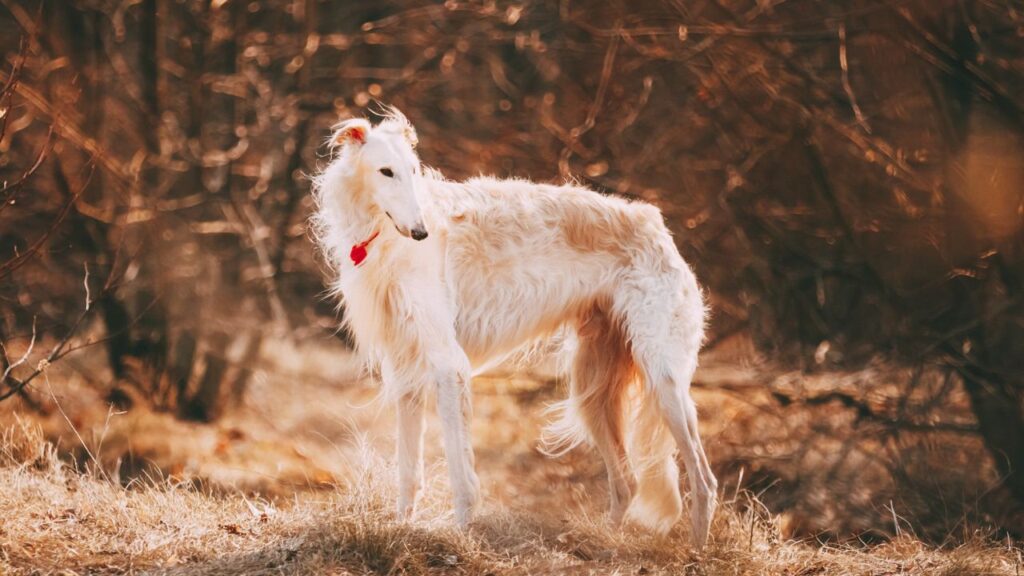
The Russian Wolfhound, also called the Borzoi, carries itself with a tall frame and proud gait that once made it a favorite among nobles. Its long muzzle, flowing coat, and calm stride give it an unmistakable presence in both working fields and social settings.
Historic Hunting Role
This breed was developed in the early 17th century for coursing wolves, foxes, and rabbits across open plains. It’s built allows bursts of speed, yet combines that with intelligence that places it among the smartest dogs within hound groups.
Natural Chase Instincts
Their hunting drive remains deeply ingrained, meaning socialization is essential during puppyhood. Key management tips include:
Early introductions to cats and smaller pets
Supervised outdoor time in unfenced areas
Mental stimulation alongside physical exercise
Intelligent but Independent
Borzois are intelligent problem-solvers, though their independence means they respond best to patient, consistent training. As larger dogs, they need space to stretch out and exercise regularly, making them best suited for homes that can provide both structure and activity.
6. Scottish Deerhound
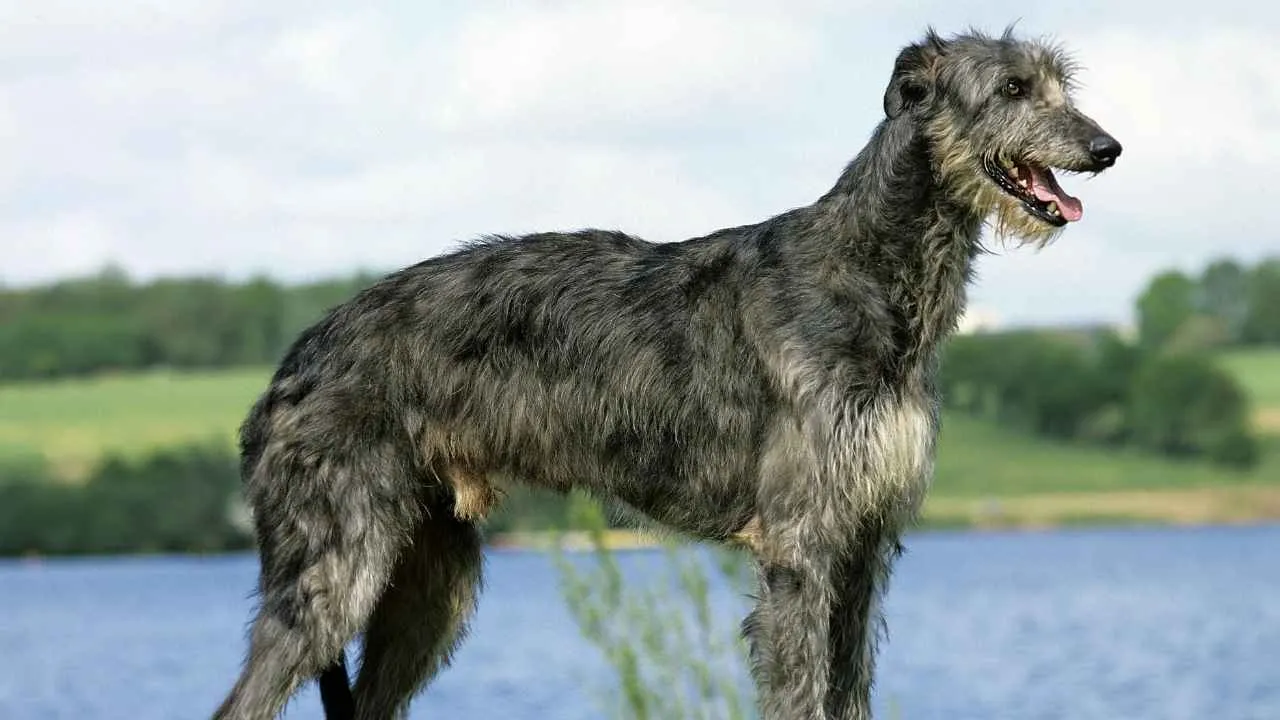
The Scottish Deerhound carries a long, lean body that allows bursts of speed and powerful strides. One of the tallest breeds, its frame resembles a Greyhound but with added strength for rough terrain. This structure makes it an intelligent hunter that relies on both sight and quick reaction.
Gentle Temperament
Despite its size, the breed is known for an affectionate nature toward families and visitors. They rarely show aggression, instead greeting strangers with calm curiosity. For households seeking the smartest dogs with a steady temperament, this hound offers both loyalty and composure.
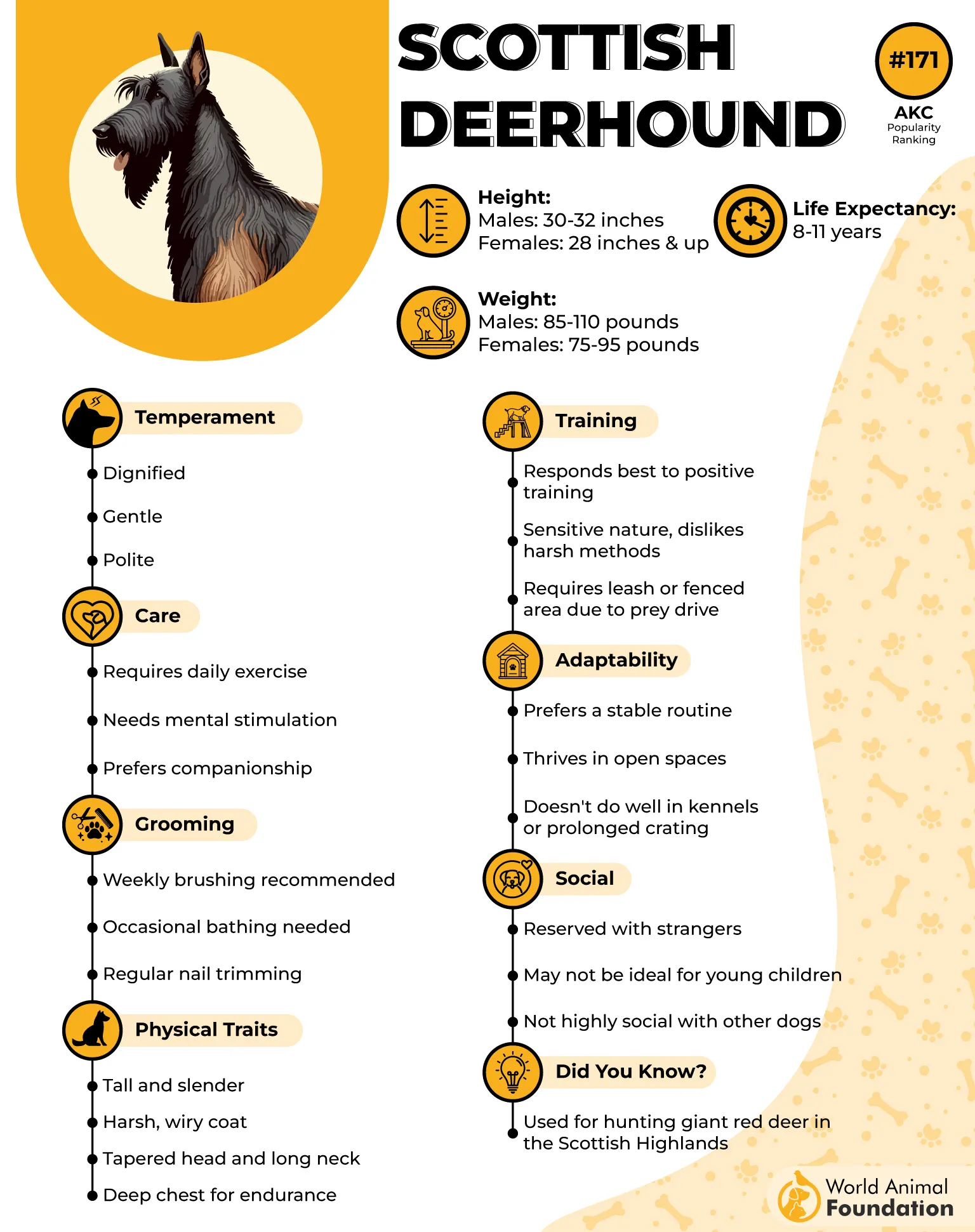
Prey Drive and Family Dynamics
Like other sighthounds, its sharp vision and high prey drive keep it alert to movement outdoors. Early and regular training helps channel this instinct while allowing harmony with cats or smaller pets. They also form close bonds with their families and dislike long hours of isolation.
Intelligence in Daily Life
Their intelligence shines through independent decision-making and adaptability in different settings. Owners often highlight their ability to sense mood shifts in the home and respond accordingly. Key traits include:
A calm, people-oriented personality
Strong memory for boundaries and commands
Endurance is suited for countryside living
7. Redbone Coonhound
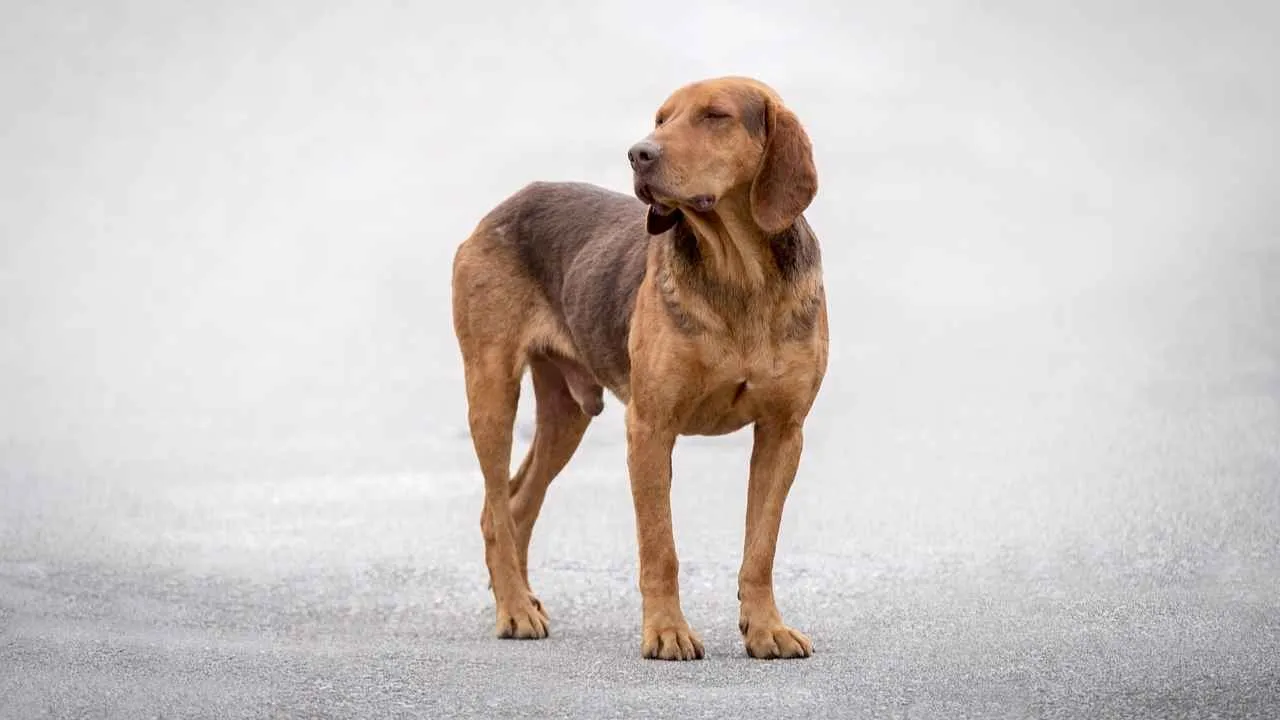
The Redbone Coonhound is widely admired for its ability to track scent trails across long distances. Its voice, a deep baying tone, signals to hunters when it is on the right trail. With a muscular frame and athletic movement, it shows focus and persistence during long pursuits.
Adaptability in Behavior
This breed has an unusual balance of energy and composure, shifting from high drive in the field to calm presence at home. They can seem goofy during downtime, which makes them more approachable than many working hounds. This duality highlights their intelligence in adapting to environments.
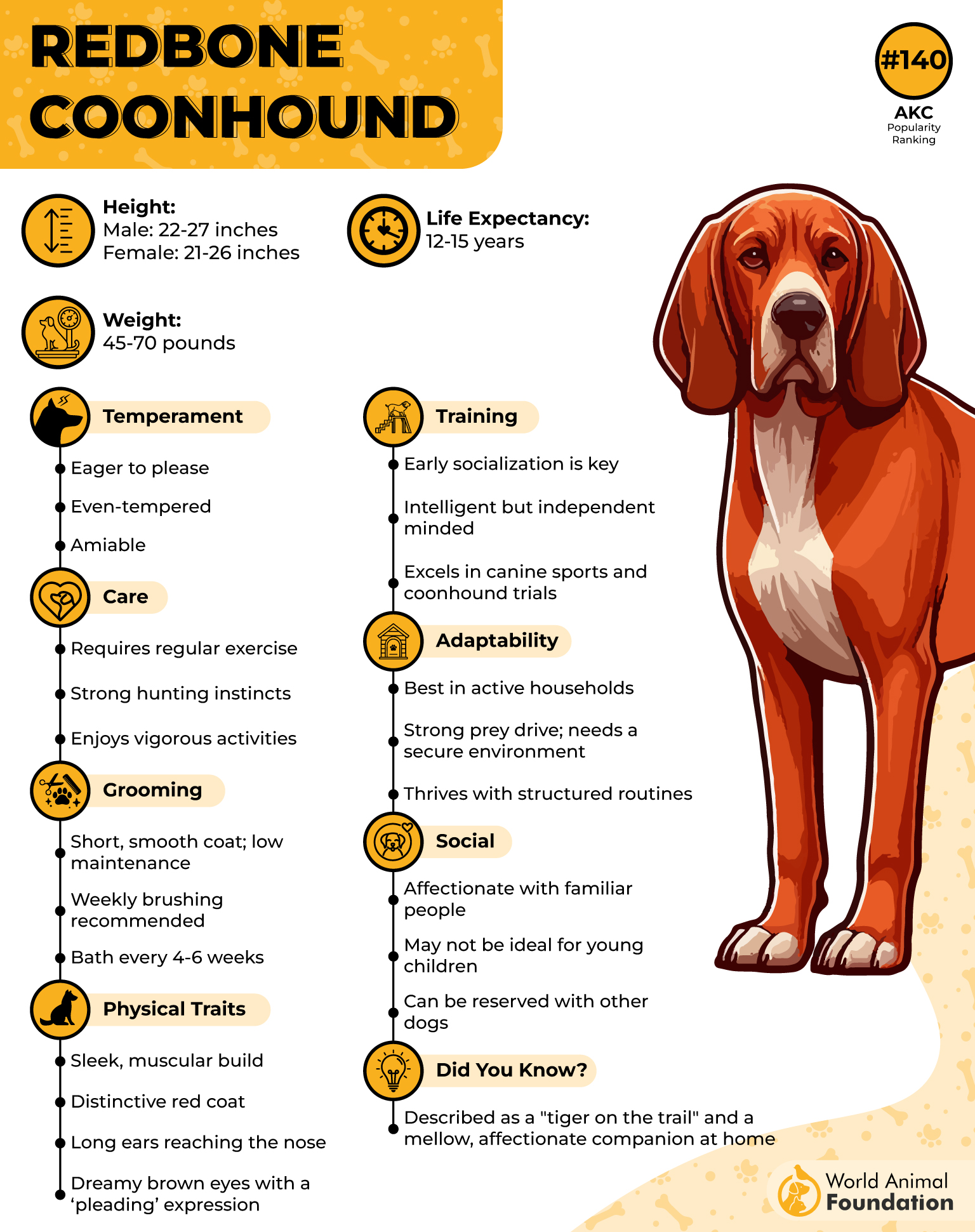
Personality Traits in Families
Their temperament blends affection with independence, which is valued in homes that appreciate both companionship and space. Key aspects include:
Friendly attitude toward strangers and family alike
A mild-mannered approach with children, when properly socialized
An independent streak that prevents them from being overly clingy
Scent-Driven Problem Solving
Their strongest skill lies in their powerful nose, capable of following scent with remarkable concentration. Even when distracted, they quickly return to task once the trail is sharpened. This unwavering focus is what places them among the smartest hound dog breeds.
Conclusion
Hounds demonstrate intelligence in ways that go beyond obedience tests. From sharp problem-solving to a keen sense of the world around them, they rank among the brightest dog breeds.
These clever dogs excel as hunting dogs, companions, and loyal guardians, blending instinct with affection. Their independent nature may call for firm training, yet the reward is a dog that both thinks and feels deeply.
While some require careful introductions to small animals, many adapt beautifully to home life. The smartest dog breeds within this group prove that independent dogs can also be excellent family pets.


